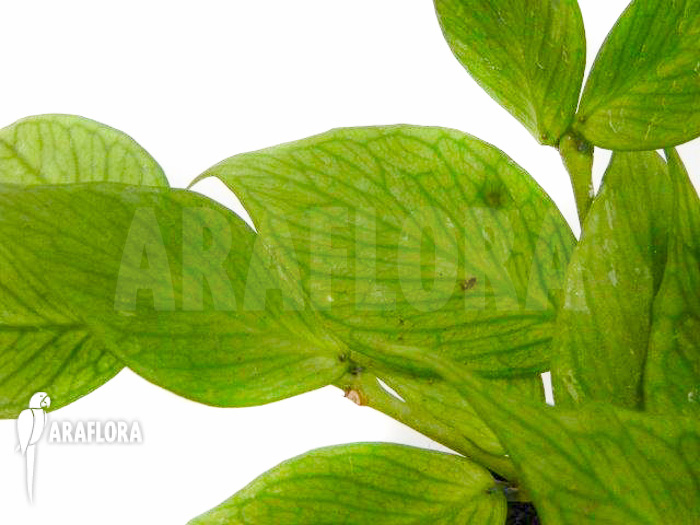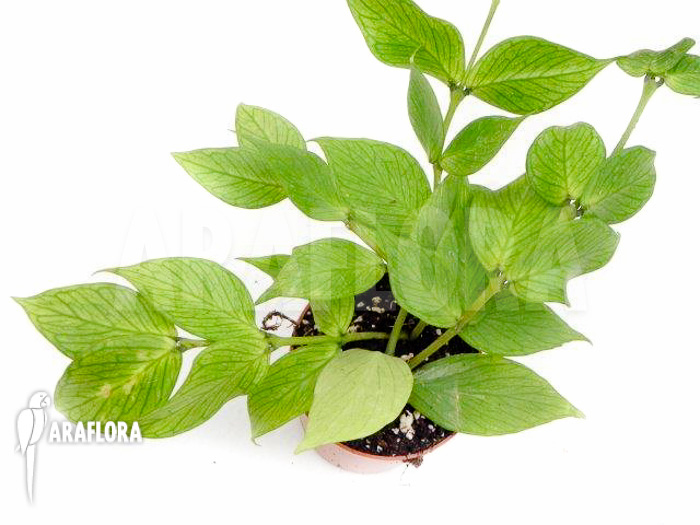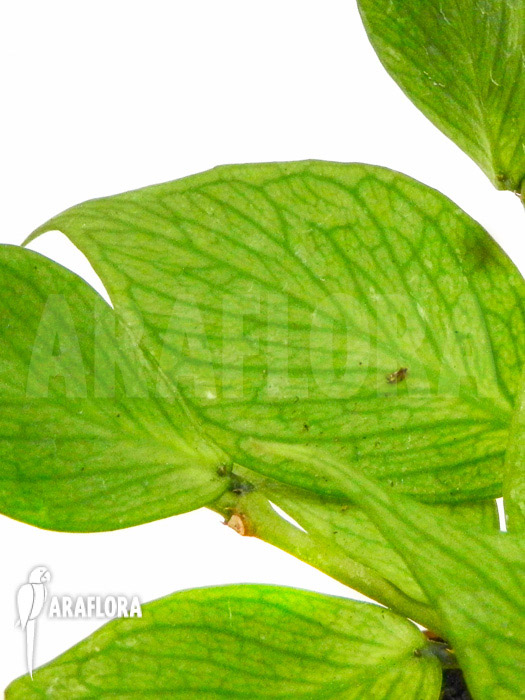Hoya polyneura - Hoya117
Hoya polyneura - Hoya117
Hoya polyneura is also called ‘the fishtail Hoya’ because of its unique leave venation pattern. It’s an amazing, fast growing houseplant with splendid leaves and beautiful red-yellow flowers.
This product is currently still in stock
Share this plant? Press on one of the following icons.
This exotic species hails from the foothills of the Himalayas in Birma and India. It grows long, rigid stems full of leaves, that will become pendant as they get heavier and longer. This Hoya is therefore best grown as a hanging plant in a basket. Although this species is a true eye-catcher because of its leaves, it can also be grown for its flowers. The flowers grow in little bunches called ‘peduncles' and are a splendid yellow with red centers. When the plant starts to flowers, be a bit careful as the flowers are capable of producing a lot of sticky nectar which can stain on wooden furniture. This can be prevented with a quick rinse in the shower.


As this species originally grows in the mountainous areas of India and Birma, it will appreciate cooler nights (around 12⁰C-15⁰C), but will also grow and survive in normal house conditions (temperatures around 20⁰C). This exotic plant will appreciate higher levels of humidity, as it is regularly engulfed in mist in its regular habitat. This fast-growing species is an epiphyte and thus does not tolerate a waterlogged soil. Use a coarse, well draining mix such as a combination of perlite, orchid bark and regular soil as a substrate. Make sure the soil is almost dried up before watering again. It is recommended to use a pot with holes in the bottom to make sure any excess water can escape.







 12 cm
12 cm
 7 cm
7 cm












